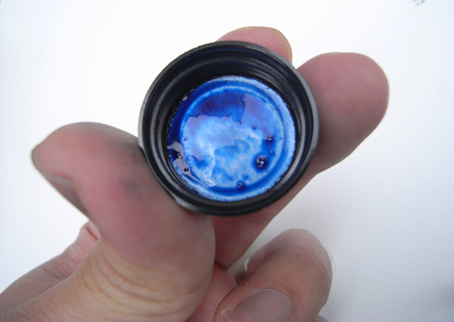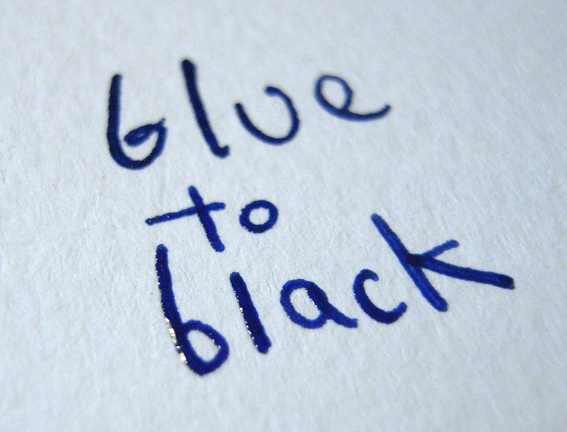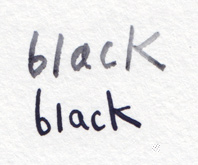Review: Diamine Registrar's Ink 30ml bottle
Diamine produces fountain pen inks that have really nice colours. I bought a Diamine Golden brown ink for my vintage fountain pen some time back and I still love it. The problem with most fountain pen inks is that they are not waterproof. So I was on a hunt to find a good waterproof ink that I could safely put into my fountain pen. I found the Diamine Registrar's Archival Ink online and when I heard it mentioned that it was safe for fountain pens, I got it. The ink is said to be iron-gall ink and it is used by registrars and clergy for signing official documents because the ink does not fade over time. I was going to use it for drawing. So as long as it was black, waterproof, and won't kill my fountain pen, that was fine.
In my review, I used my Noodler's Ahab fountain pen since it's easy to clean if it ever does clog.
This ink had an interesting quality. It appeared blue in the bottle. And even when I put it down on paper it's still blue but turns toward black after a few seconds. The black isn't a solid black. But rather a dark grey. How dark it turns out depends on how much ink your pen dispenses. More ink in your line creates a darker line. Personally, I wasn't impressed with the darkness of the black. It wasn't a very attractive dark grey to me either.



Now for the waterproof test. I've read that iron-gall inks take longer to dry so I gave it lots of time. As you can see, even after 5 minutes, the ink still bled out a little when mixed with the water.

Next, I did a drawing. I made sure the lines had lots of ink so it was black enough. Then I left it to dry. After 5 minutes, I ran a paint brush with clear water over it and it still bled. Because I laid the ink thickly this time, it bled more this time. At least the lines did not disappear. It just bleeds.
Personally, I would not recommend this ink for drawing with watercolours. Definitely not. It bleeds too much.



In conclusion, I'd say this ink is only partially waterproof. It is not very black. The blue to black transformation is interesting. But I feel it does not contribute to the drawing experience in anyway. Perhaps it is still best used for signing official documents.
The ink is available on Amazon here: https://www.amazon.com/Diamine-Registrars-Blue-Black-Bottled/dp/B003OXN…
Search Jackson's Art Supplies (UK) also.
Comments
I've heard that a lot of iron
I've heard that a lot of iron gall inks have another (non-waterproof) dye mixed in to darken them. The iron gall component should be pretty permanent once it sets, but that can take a while (possibly a week or more) depending on the paper you use it on, and I don't think it's ever really black. Of course, this is all hearsay, mostly from FPN; I've never used one of these myself.
I have used inks with iron
I have used inks with iron-gall content for years because of their permanency, which is required in my job. Typically the ink consists of two components: 1) The iron-gall suspension and 2) An aniline dye. The irongall component is only weakly colored by itself, so the addition of the dye is necessary to se the ink when writing. When soaked in water, the aniline dye washes out and the grayish iron-gall component remains on the paper. The binding of the iron-gall to the cellulose in the paper is getting progressively stronger during the first 24 hours after applying it.
Various iron-gall inks contains varying amounts of iron-gall. Diamine Regstrars Ink have considerably more iron-gall than say Montblanc Mignight Blue.
Only use iron-gall ink which is clearly labelled as suitable for fountain pens. There are also "medieval" recipes available which are more acidy and have a much larger iron-gall content. These should NOT be used in fountain pens as they tend to clog the pen easily and the acidity can damage the pen.
Also iron-gall inks made for fountain pens have e tendencu to throw a precipitate which can clog the pen if it's not flushed with water very regularly. Never put a pen away with iron-gall ink in it. Empty it and flush it with water.




Add new comment